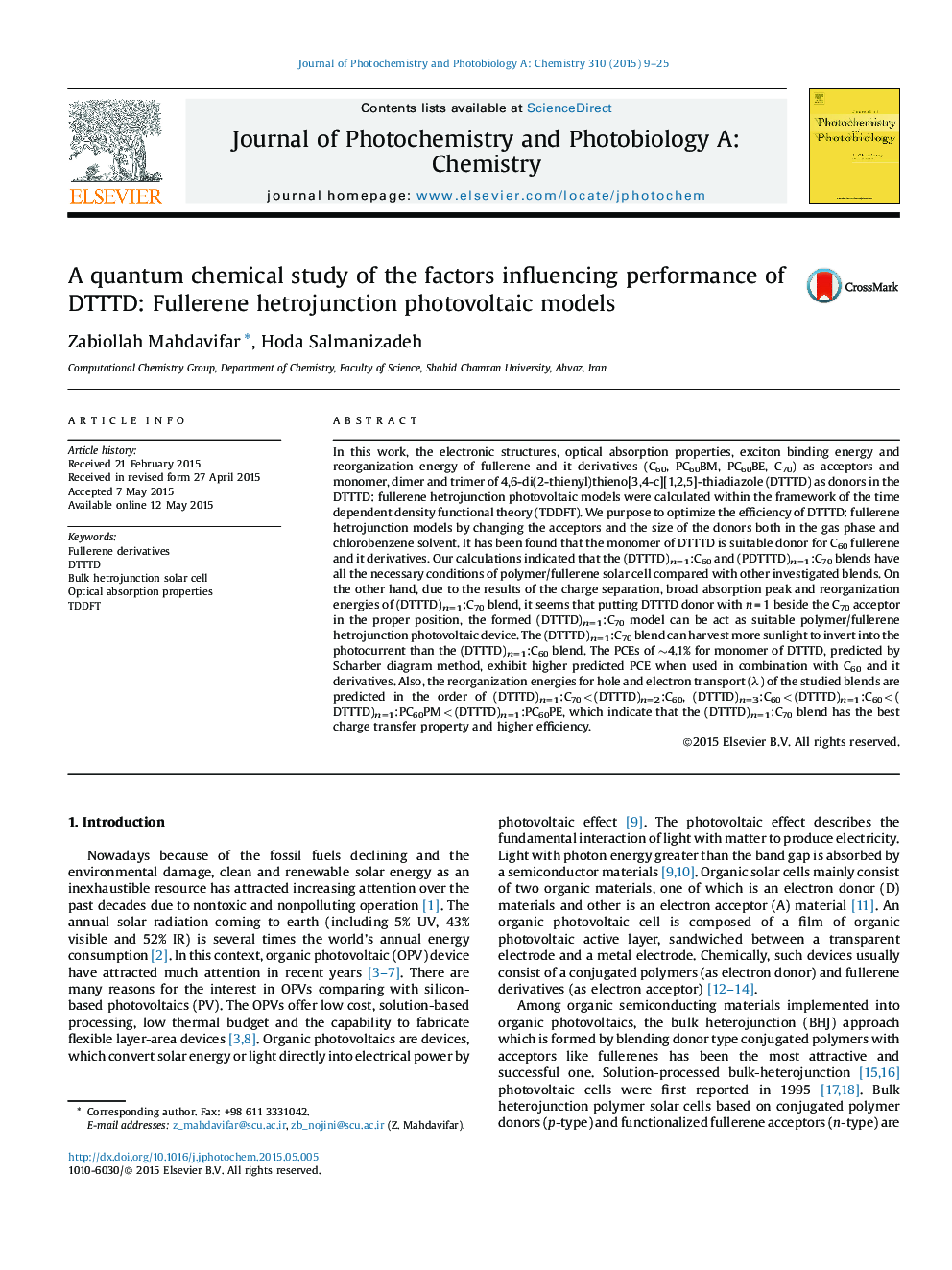| کد مقاله | کد نشریه | سال انتشار | مقاله انگلیسی | نسخه تمام متن |
|---|---|---|---|---|
| 26585 | 43965 | 2015 | 17 صفحه PDF | دانلود رایگان |

• New (DTTTD)n=1,2,3:Fullerene models intoduces as bulk hetrojunction solar cell.
• LD–LA and VOC values show that the monomer of DTTTD is suitable donor for C60 fullerene and it derivatives.
• Stability of dimmer and trimmer of DTTTD depends on anti- or syn-conformers of thiophene rings
• (DTTTD)n=1:C60 and (PDTTTD)n=1:C70 blends have all necessary condition of polymer/fullerene BHJ.
• (DTTTD)n=1:C70 blend can harvest more sunlight to invert into the photocurrent.
In this work, the electronic structures, optical absorption properties, exciton binding energy and reorganization energy of fullerene and it derivatives (C60, PC60BM, PC60BE, C70) as acceptors and monomer, dimer and trimer of 4,6-di(2-thienyl)thieno[3,4-c][1,2,5]-thiadiazole (DTTTD) as donors in the DTTTD: fullerene hetrojunction photovoltaic models were calculated within the framework of the time dependent density functional theory (TDDFT). We purpose to optimize the efficiency of DTTTD: fullerene hetrojunction models by changing the acceptors and the size of the donors both in the gas phase and chlorobenzene solvent. It has been found that the monomer of DTTTD is suitable donor for C60 fullerene and it derivatives. Our calculations indicated that the (DTTTD)n=1:C60 and (PDTTTD)n=1:C70 blends have all the necessary conditions of polymer/fullerene solar cell compared with other investigated blends. On the other hand, due to the results of the charge separation, broad absorption peak and reorganization energies of (DTTTD)n=1:C70 blend, it seems that putting DTTTD donor with n = 1 beside the C70 acceptor in the proper position, the formed (DTTTD)n=1:C70 model can be act as suitable polymer/fullerene hetrojunction photovoltaic device. The (DTTTD)n=1:C70 blend can harvest more sunlight to invert into the photocurrent than the (DTTTD)n=1:C60 blend. The PCEs of ∼4.1% for monomer of DTTTD, predicted by Scharber diagram method, exhibit higher predicted PCE when used in combination with C60 and it derivatives. Also, the reorganization energies for hole and electron transport (λ) of the studied blends are predicted in the order of (DTTTD)n=1:C70 < (DTTTD)n=2:C60, (DTTTD)n=3:C60 < (DTTTD)n=1:C60 < (DTTTD)n=1:PC60PM < (DTTTD)n=1:PC60PE, which indicate that the (DTTTD)n=1:C70 blend has the best charge transfer property and higher efficiency.
Figure optionsDownload as PowerPoint slide
Journal: Journal of Photochemistry and Photobiology A: Chemistry - Volume 310, 1 September 2015, Pages 9–25